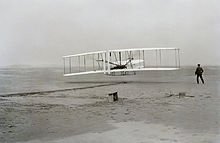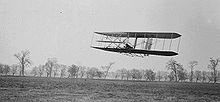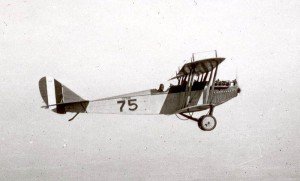Thank you for reading this post, don't forget to subscribe!
There are many fine aviation museums in the United States which make great additions to vacation planners and short weekend trips. We’ve listed several of our favorites near the end of this article. Each one is unique and makes an excellent fun stop.
Connecticut Mulls Change
The story below addresses a controversy in Connecticut which may indeed result in a new law being passed in that state which in essence declares that the Wright Brothers were not the first in flight.
A Connecticut House Bill which is being prepared for the governors approval states…“The Governor shall proclaim a date certain in each year as Powered Flight Day to honor the first powered flight by [the Wright brothers] Gustave Whitehead and to commemorate the Connecticut aviation and aerospace industry,” Republican state Sen. Mike McLachlan made the statement…”There’s no question that the Wright brothers will retain their place in aviation history and rightfully so. They just weren’t first.”
The Controversy

One of the biggest controversies concerning early aviation revolves around the questions of...Who was the first in flight in the United States? Were the Wright brothers the first to succeed with a controlled flight within the borders of the U.S.? While the common wisdom has always been that indeed it certainly was the Wright brothers and the flight took place in 1903, the naysayers to this claim say it is untrue. Thus the continued controversy, at least with some doubters.
The “First in Flight” Controversy
The Smithsonian Museum displays the Wright Brothers 1903 Wright Flyer, described as the world’s first successful airplane. The exhibition at the Smithsonian Museum in Washington D.C. also displays historic photographs and cultural artifacts, along with instruments and personal items associated with the Wright Brothers.
There have been some historians who contended that an earlier powered flight took place aside from the hot air balloons of the 1800’s. In other words, some have stated that a powered airplane or aeroplane flight took place in St. Joseph Michigan in 1898.
A man named Augustus Moore Herring who had some background with gliders had carried out a several gliding experiments. Herring found financial backing and constructed a biplane hang glider in 1898. The glider was equipped with a small compressed air engine. Newspapers reported that Herring flew this powered, heavier-than-air craft 50 feet on October 10, 1898 over the lakeside sand dunes of St. Joseph, Michigan.

The Case For Gustav Whitehead
Another story involves a man named Gustav Whitehead and this is the claim now accepted by Connecticut lawmakers. . Whitehead increased his knowledge step by step and evolved a series of both gliders and airplanes, each one a modification of its predecessor.
It was reported that Whitehead flew several times in his own powered aircraft (high wing monoplane) design in both 1901 and 1902. The 1901 flight, which is the event most discussed, apparently took place in Fairfield Connecticut in August of that year. A newspaper story at the time, which seemed to lack an author, reported that Whitehead’s heavier than air craft flew about one-half mile and reached up to 50 feet in height.
To this day there are historians who do credit Gustav Whitehead with this flight experiment. Conversely there are those who do not. The doubters point to the lack of concrete evidence that the event actually took place. In other words, an absence of solid documentation. Although, in addition to local coverage, it’s been reported that the Evening World newspaper in New York reported on the event. There were also stories about Whitehead’s achievements in a 1903 Scientific American. There were additional reports as well. Supposedly Whitehead’s unsheltered craft was destroyed during a storm and hence there wasn’t a craft to display to the public as the Wrights were able to do.

The Whitehead doubters also point out that Whitehead’s control of the craft was by shifting body weight which they claim would not be sufficient to control an aircraft. In addition, it’s quite questionable that a charcoal fueled steam engine, which was reportedly used, could provide enough power to lift itself off the ground.
In Whitehead’s favor however is the fact that today’s light aircraft have many similarities to the high wing monoplane design of his 1901 flight.
Whitehead Ignored?
The real story about Gustav Whitehead’s achievements faded from the public eye until the mid 1930’s. At that time Popular Aviation magazine published articles where the author obtained affidavits from people insisting they witnessed Gustav Whitehead’s flights. The witnesses had several different recollections of what they saw in regards to height and distance. A year after the Popular Aviation story, a Harvard professor disputed the claim in an article and then, after further investigation and speaking with witnesses, wrote another article supporting Whitehead’s claims.

There were articles written decades after that criticizing the Smithsonian in particular with giving scant attention to the achievements of Gustav Whitehead.
It does appear that Whitehead’s flights received much more credit in publications and articles other than from anything the Smithsonian put forward.
As it turned out, in 1968 the state of Connecticut honored Gustav Whitehead with the recognition of “Father of Connecticut Aviation“.
The Historic Significance of the Wright Brothers
The Wright Brothers had the advantage of keeping extremely detailed records of both the construction of their aircraft as well as the flights afterward not to mention a surviving model. In some respects you could say that the Wright Brothers were quite successful in touting their accomplishment. In regards to the achievements of Gustav Whitehead, I believe that there is certainly ample evidence that he did experiment with powered flight. He may very well have done this prior to the Wright Brothers four successful flights at Kitty Hawk.

In a way, there is also somewhat of a similarity to the achievements of Henry Ford. There was much experimentation with automobiles in the very late 1800’s. Several people put together motorized buggies with a variety of steering mechanisms and power plants. In fact, some of these were former horse buggy builders. Henry Ford however was recognized as an automobile industrialist and founder of the Ford Motor Company. While Henry Ford did not invent the concept of the automobile, he developed and manufactured the first automobile that many middle class Americans could afford to buy. He achieved this by creating the assembly line which turned out more cars for less money. There is no better example of Ford’s achievement than the famous Model T.
While there have been questions raised as to who exactly invented the airplane (I’m not sure there will ever be a consensus on that issue), a big factor in favor of the Wright Brothers achievement is the fact that they had controlled flight without using body weight as a primary instrument.

According to the Smithsonian, the instruments the Wright’s employed were arranged so all could be turned off, along with the engine, the instant the flight was over by a single movement of a wooden lever mounted on the lower wing. Instruments the Wright Brothers used included a Richard anemometer and a stopwatch that were mounted on the front strut to the pilot’s right. These recorded distance through the air in meters and the duration of the flight. From these of course airspeed could be calculated. In addition, a Veedor revolution counter was mounted at the base of the engine to record engine revolution.
The Wright Brothers achievement at Kitty Hawk and the design they utilized is said by many to be the model from which aviation grew from. Therefore, the motto “First in Flight”. One might also argue that their Kitty Hawk flights were much more documented. There’s more to the story explaining why the Wright Brothers Kitty Hawk accomplishment is presented today the way it is…..
After his brother Wilbur passed away, Orville Wright was determined to defend the fact that the brothers be considered the inventors of the airplane. In fact, the Wright Flyer was actually moved to a London museum during a period of disagreement with how the Smithsonian was presenting the Wright Brothers Kitty Hawk achievement. This finally seemed to be settled once and for all in 1948.
An Agreement With The Smithsonian

Not to be understated, and certainly in response to the controversy regarding Gustav Whitehead’s 1901 flight, is an agreement entered into between the Wright heirs and the Smithsonian in 1948.
The agreement reads as such...” Neither the Smithsonian Institution nor its successors nor any museum or other agency, bureau or facilities administered by the United States of America, by the Smithsonian Institution or its successors, shall publish or permit to be displayed a statement or label in connection with or in respect of any aircraft model or design of earlier date than the Wright Aeroplane of 1903, claiming in effect that such aircraft was capable of carrying a man under its own power in controlled flight”.
It’s an interesting controversy and one that probably will always be with us for a long time. I think it’s viable that many, including Whitehead, did experiment with powered flight design at about the same time the Wright Brothers were working on their designs. The question than is...Who of all the inventors or experimenters contributed the most to what today we call the aviation industry? Another way of saying it is...Was there any one early aviation development that stood out from all the others?

According to the Smithsonian in Washington D.C., it is that of the Wright Brothers at Kitty Hawk. Smithsonian contends that the Wright Brothers were the “First in Flight”.
Two links on our Western Trips site you’ll be interested in is to a photo article about the Beechcraft Model 18 and the F-15 First Responder.
Also, on Trips Into History see our article on the Glore Psychiatric Museum in St. Joseph Missouri. This is one of the 50 most unusual museums in the country.
Some Great Places to Visit
If you’re traveling in the Tucson Arizona area you’ll want to make a stop at the massive Pima Air and Space Museum. The museum is located just off Interstate 10 east of Tucson and covers 80 acres. The museum is open seven days per week and exhibits over 300 aircraft and spacecraft.
 A much smaller but very unique museum is the Pacific Coast Air Museum located just a few miles north of Santa Rosa California and about 65 miles north of San Francisco. One of their very special displays is of the F-15 First Responder. This is one of the actual aircraft that scrambled during the attacks on September 11th 2001. Many other military aircraft are displayed as well.
A much smaller but very unique museum is the Pacific Coast Air Museum located just a few miles north of Santa Rosa California and about 65 miles north of San Francisco. One of their very special displays is of the F-15 First Responder. This is one of the actual aircraft that scrambled during the attacks on September 11th 2001. Many other military aircraft are displayed as well.
The National Museum of Nuclear Science and History in Albuquerque New Mexico is a real treat to visit. Aircraft among their outdoor display include a B-52 Stratofortress and a B-29 Superfortress from 1945. Also many displays of rockets as well as a conning tower fin from a retired nuclear submarine.

While traveling in the state of Oregon make a note to visit Hood River. Here you can explore a fascinating aircraft and vintage automobile museum. The Western Antique Aeroplane and Automobile Museum (WAAAM) displays one of the largest collections of historic propeller driven airplanes in the United States, with each and every plane in flying condition. Every plane has been beautifully restored and represents the growth of aviation. Among the many aircraft on display is a 1917 Curtiss JN-4D, a 1928 Boeing 40 C, a 1929 Curtiss Robin and a 1929 Heath Parasol. There are many more. The Western Antique Aeroplane and Automobile Museum is located just a few miles south of Hood River. The museum also hold a fly-in each year the weekend after Labor Day. Offered are food, fun, exhibits and plane rides.
(Photos of Beechcraft 18, Heath Parasol, Pacific Coast Air Museum, B 52 tail photo from authors collection. Remainder photos and images from the public domain)
